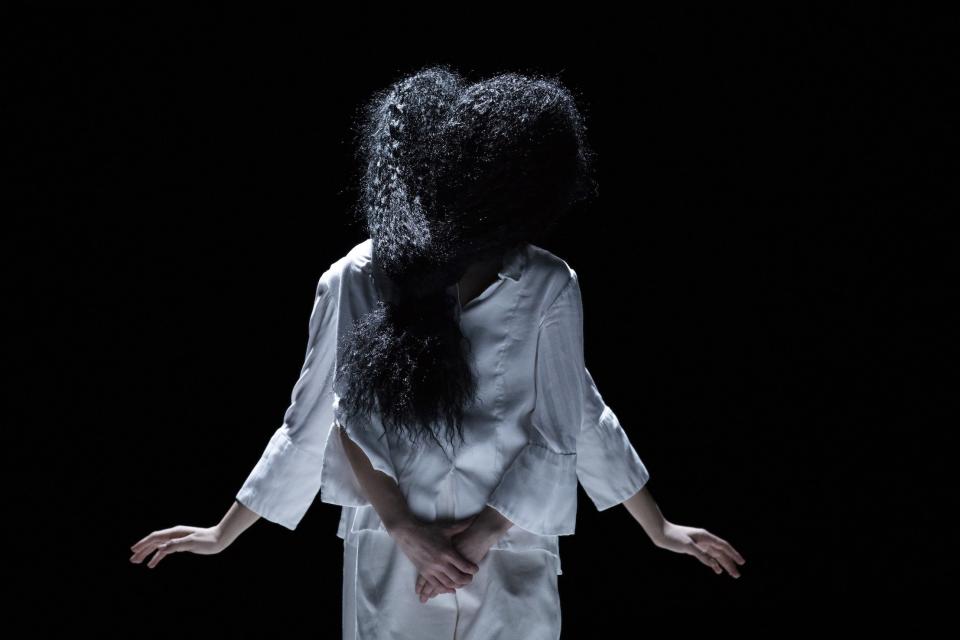The Original “Punk Ballerina” Karole Armitage Teams up with Hairstylist Danilo on a New Dance Work
Once a “punk ballerina,” always a punk ballerina. Or at least, referring to the current version of her white-blonde pixie cut, “I’m still punk...ish,” the choreographer Karole Armitage, 65, says with a quick laugh. She earned the nickname—inked on a 1986 cover of Vanity Fair—after leaving behind a ballet company (the George Balanchine–affiliated Grand-Théâtre de Genève) and then a modern-dance one (five years with Merce Cunningham) to launch her own ecstatically charged experiments. In Armitage’s early world, spiked stilettos and fingerless black gloves were regular accoutrements; collaborators included David Salle, Jeff Koons, Christian Lacroix, and Jean-Paul Gaultier. In 1981, the year Armitage struck out on her own, she debuted a piece called Drastic-Classicism at New York’s Dance Theater Workshop on West 19th Street. It was a cacophonous, thrashing affair, with four electric guitars and a drum set onstage. Theatergoers with sensitive ears could pick up cotton puffs at the door.
This week—same address, different name (the venue is now called New York Live Arts)—Armitage presents another thought-provoking performance, if more subdued. You Took a Part of Me, an hour-long work that premiered at the Japan Society earlier this year, is a dreamy homage to traditional Noh theater. Loosely inspired by the 15th-century play Nonomiya, the dance is an “archetypal investigation of a woman revisiting love complications, with its tangles and knots, muddied expectations and outcomes, leaving waves of question and doubt as she is ultimately abandoned,” Armitage writes in the program. That psychological weight is not just communicated through movement: The editorial hairstylist Danilo has created cascading black extensions for the two female dancers, who play the Ghost (a ravishing Megumi Eda) and her double (Sierra French), alongside her lover (Cristian Laverde-Koenig).

“This is hair that morphs, that is choreographed,” Armitage says of the unusual twist in costuming—not the typical bun locked into place in the dressing room. The first image we see is the two women conjoined by a single waist-length braid, their faces obscured by hair. We watch as the Ghost methodically coils her ponytail into a topknot, securing it with pins and a hairnet offered by a shadowy figure (Alonso Guzman). Other times she dances with a chopstick in hand—an accusatory gesture, a weapon bared—before billowing her loose hair and clasping it like a bouquet under the chin.
“There’s a delicacy to it all,” explains Danilo on the phone from Los Angeles, describing the expressive drama in each 40-inch mass of hair. Danilo and Armitage go back to the late ’70s, when she was still dancing for Cunningham and he was at the time dating a company member. Danilo then started giving her haircuts, in whoever’s apartment was convenient that day. That signature pixie was part of Armitage’s rejection of certain dancer stereotypes. “I didn’t want to be a yearned-after, romantic symbol of femininity,” she says, alluding to the long-haired Balanchine muse. “I just always felt like I was an independent, modern woman—and could be erotic as a woman.” Danilo’s crisp cuts helped cement that identity. “His work is so great,” Armitage says, singling out the stylist’s thoughtful, intuitive artistry. “If you could cut people’s heads off and put his work in a gallery, it would be selling for huge amounts of money! He’s that good.” (Longtime clients like Gwen Stefani would agree.)
Still, negotiating elaborate looks for moving bodies took fine-tuning. Doing hair for actors is one thing, says Armitage, but “the violent athleticism and unbelievable forces of physics that are put onto the hair when people are really dancing—that makes it incredibly more difficult.” The final results onstage have a refined subtlety that keeps the focus on Armitage’s choreography, which favors curvilinear sweeps that are more “about the path rather than the position,” she says. “But then there are always those street influences—raw accents and moments of just grit.”
That toughness is echoed in the costumes by Peter Speliopoulos, a longtime Armitage collaborator and former creative director of Donna Karan. Airy white pants and tops are stripped away to reveal flesh-toned leotards with narrow black bands across the breasts and groin. Thong backs give the effect of slim Sumo wrestlers—at once vulnerable and bracingly strong. “It’s nude illusion,” Danilo says of the costumes, “which is my favorite fashion term! In the ’80s, there was a band for a moment at the Pyramid Club called Nude Illusion.”
It’s hard to escape that defining era. (A face-framing arm gesture, performed at one point by the three dancers, calls to mind early voguing moves; it was Armitage who choreographed Madonna’s 1990 music video.) As if on cue, Armitage points out that there’s still one finishing touch before showtime. “Manic Panic, baby,” she says of the jet-black dye jobs the dancers will get before taking the stage, evoking that East Village mainstay. “Punk comes back, as always.”
Originally Appeared on Vogue

